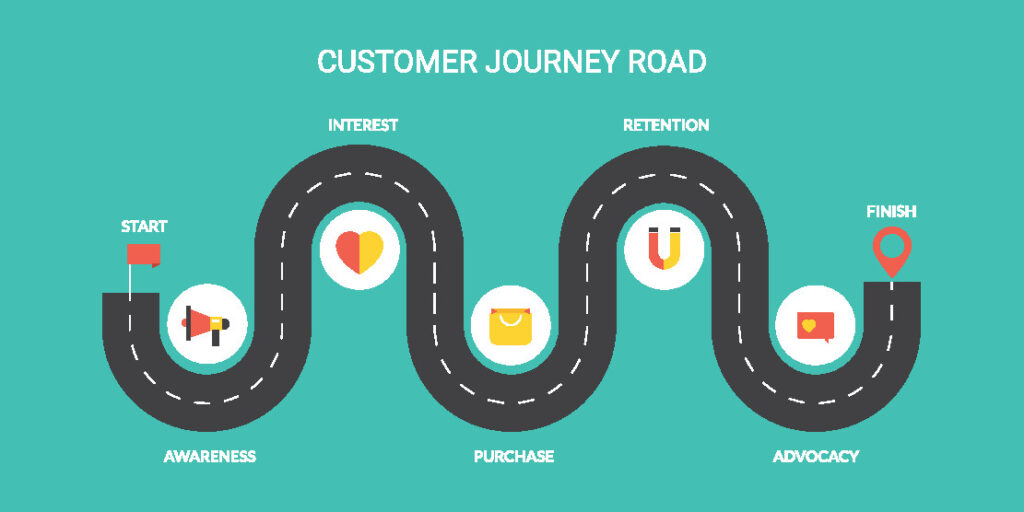Transformation, change, evolution; all of these drive an organizations business landscape. These can come in the shape of the “common” transformations due to digitalization, new disruptive competitors and/or technologies or in the form of the once-in-a-lifetime events. Regardless of the source of transformation, organizations need to find ways to adapt to these changes and manage the customer journey. Organizations must continue to provide a compelling message and a superior customer experience in these times of transformation.
At the BwB Advisors, we see 4 key factors that an organization must address.
1) Know who your customer is & what they expect:
Your business cannot be successful without identifying and winning over your target audience, which is why understanding customer expectation is so important. Customer expectation refers to the wants and needs of the people you want to attract to buy your products or services.
Your marketing should be based largely on customer expectation, which means that you communicate the qualities that make your products and services attractive to your targeted audience. The expectations customers have are typically based on actions they value as important when they interact with a company. Spend some time understanding what your customers expect and turn those insights into actionable go to market plans.
How to get to know your customer and their expectations?
Social Listening
Over 71% of buying decisions are influenced by social media, where people discuss and review products and services of various brands. You can collect that data and use it to get a better understanding of what your customers expect.
Open conversations and surveys
Be open and show a willingness to engage, listen and react. Reach out to existing and potential customers and have open conversations with them or invite them to provide valuable insights through well-planned surveys through the customer journey.
Competitor Research
No matter your industry or sector, there is stiff competition, which makes it imperative to keep an eye on your competitor’s performance and what they are doing. This will help ensure that you can learn from the good, take advantage of the bad and ensure that your messaging resonates with your target audience gaining an edge over your competitors.
2) Clearly define your customer journey:
The customer journey begins the very moment your brand interacts with a prospect for the very first time and concludes when the individual has decided about your offering. Your goal is to influence the prospect into making a positive buying decision, which is only possible when you make this journey short and pleasurable.
This can get tricky, but with some planning, you can do this the right way. To start on the right foot, create a customer journey mapping template that records phase-wise customer experiences and behavior. Segregate them into five different phases — Awareness, Interest, Purchase, Retention and Advocacy.
You can then measure their experiences based on how the customer feels and their interaction with the brand. There are innumerable tools that let you track user interaction such as in-page clicks, scroll patterns, mouse movements, etc. By using this data, you can plan and structure your touchpoints to create a pleasurable customer journey.
Some key things to keep in mind:
-
-
- Map the customer journey with a clear objective.
- Create customer personas to plan the process.
- Plan actions based on how you structure your touchpoints.
- Identify your customer’s research sources and lead them to your official website.
- Find out common technical issues based on user behavior and resolve them quickly.
- Use the data to segregate customers based on behavior and communicate accordingly.
-
3) Communicate your organization, product & service differentiators:
In the digital age, customers are not going to be content with businesses that continue to sell the same products and services even if those products and services are of a high quality. Customers expect and seek out companies that consistently develop new products that are driven by new technology and a keen understanding of their customers’ wants and needs.
This directly affects marketing because it forces business owners to communicate how their products and services are unique and cutting-edge, with the sought-after “cool factor” that makes Apple the darling of the electronics industry. It is almost certain that your targeted audience has become so much savvier about technology and product development. They expect your marketing to at the very least match what they know, and often, they want to hear about a technological breakthrough that they didn’t even know was possible.
4) Manage customer queries & communicate effectively:
Organizations are going to receive customer queries through multiple channels such as email, live chat, or even through phone calls. All of these channels need to be connected and managed efficiently to ensure seamless communication.
A potentially overwhelming task before every organization is the need to excel at managing customer queries from all sources with limited resources. There are basically two things that organizations struggle with — technical execution and prompt communication. Some organizations can technically execute, but do not communicate well. Conversely, some communicate well but miss deliverables, deadlines, and critical steps in the process.
Therefore, organizations need to deploy user-friendly technologies to manage and execute customer requests. Unfortunately, most businesses make use of multiple tools for receiving, assigning, managing, and tracking customer requests; only serving to add to the complexity. As such, the challenge becomes to find a process & platform that supports omnichannel request management and can be automated based on certain predefined conditions.
A simplified tools landscape allows your organization to communicate much more efficiently & effectively.
Transformation, change, evolution; we at the BwB Advisors are here to help your organization not only overcome the barriers to success these present but to thrive. Reach out to us to see how we can help you by clicking here.
February 2022 / Insights / By: Joerg Petzhold

